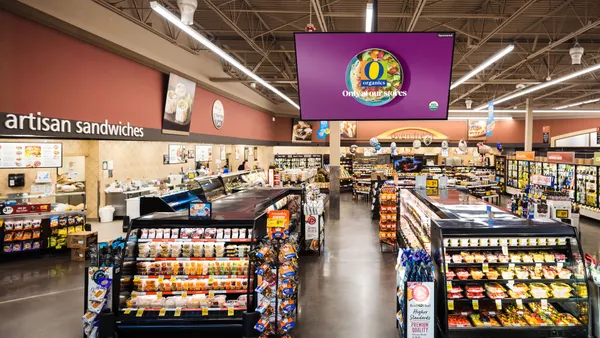Brief:
- Snapchat introduced a dynamic advertising format to help marketers automatically create ads and reach targeted users of the photo-messaging app in real time. The dynamic format selects items from the product catalogs of advertisers and shows them to target groups of Snapchat users, per a blog post by the company. Global advertisers can use the dynamic ad platform immediately, but their campaigns initially will reach users in the U.S. The company plans to roll out dynamic ads worldwide later.
- Sunglasses brand Shady Rays said the new format cut its cost-per-purchase rate by 66% compared with another simultaneous re-engagement campaign that didn't use dynamic ads. The brand nearly quadrupled its return on advertising spending (ROAS), Chris Ratterman, Shady Rays founder and CEO, said in the blog post.
- Online fashion boutique Princess Polly also saw a 66% decline in cost-per-purchase while almost tripling its ROAS compared with a simultaneous U.S. campaign. Accessories brand Vitaly reused existing product feeds to create the dynamic ads, helping to cut cost-per-purchase by 21% while boosting ROAS by 29%, per Snapchat.
Insight:
As parent company Snap vies for more digital ad sales, Snapchat's dynamic ads aim to help mobile marketers cut their ad costs while driving sales for their online catalogs with improved targeted that adjusts on the fly. The dynamic format aims to save marketers the time and effort required to manually adjust ad settings for each product.
Snap offers a variety of templates, most of which are geared toward retail, e-commerce and direct-to-consumer (DTC) brands whose product catalogs are available on Snapchat. The dynamic ads are automatically updated with changes to price and availability.
The rollout of dynamic ads brings Snapchat's service more in line with ad formats that Google and Facebook already have. The move may help Snap compete more effectively with its bigger rivals that control about 70% of the U.S. digital ad market. Increasing ad effectiveness could help Snapchat expand its power to influence household purchase decisions by reaching Gen Z users.
Snap claims it reaches 90% of 13- to 24-year-olds, making it more appealing to brands that want to cultivate their next generation of loyal consumers and to creators who seek audiences that are mostly unreachable on traditional media channels like TV.









